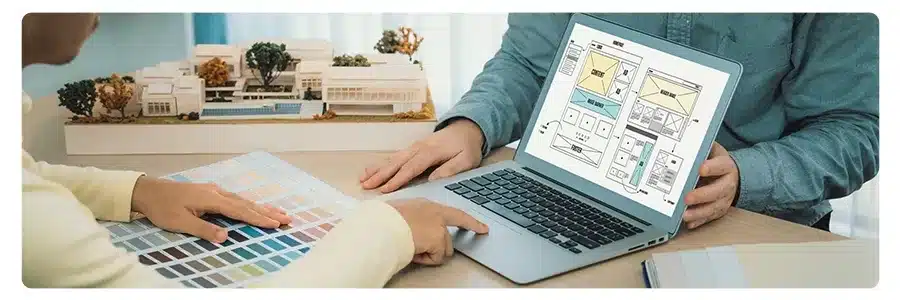Website design is a dynamic and creative sector that combines art and technology, providing several chances for people with a talent for both creativity and problem-solving. If you’re ready to break into this growing business but don’t know where to start, this guide will walk you through the necessary steps on how to start a career in website design.
We will discuss 5 tips from the experts to help you get started and make a long-term influence in the field of web designing.
1. Understand the basics of Web design
Before getting into web-specific tools and techniques, it’s critical to understand the fundamental design principles. These are layout, typography, color theory, and visual hierarchy. When applied effectively, these features can make your websites more visually appealing and easy to use.
Understanding these fundamentals is critical because they apply to all design projects. Online resources such as Coursera, Skillshare, and YouTube provide beginner-friendly courses on design theory, making it simple to get started.
2. Get Your Hands on Web Design Tools
To become proficient in website design, you must become comfortable with industry-standard tools. Popular choices include:
- Figma: Figma is well-known for its collaborative features and UI/UX versatility.
- Adobe XD: Adobe XD is ideal for wireframing, prototyping, and creating interactive design elements.
- Sketch: A powerful design tool commonly used to create user interfaces and prototypes.
3. Understand Basic Coding
While website designers are primarily concerned with appearance and user experience, mastering the principles of HTML, CSS, and JavaScript is a game changer. Understanding how websites are built and styled can help you work more effectively with developers and create designs that are both beautiful and functional.
Many experts recommend studying basic coding even if you don’t intend to become a developer. Platforms such as Codecademy and freeCodeCamp are excellent options for learning these skills at your own pace.
4. Build a Portfolio with Personal Projects
Your portfolio is your most powerful tool. Even if you don’t have clients yet, you can use personal projects to showcase your skills. Redesign existing websites, create hypothetical business sites, or collaborate on projects for friends and small businesses. Your portfolio should showcase a diverse range of your skills, from landing pages to entire website designs.
A well-rounded portfolio, particularly one that incorporates personal work, can make a lasting impression on potential employers or clients. Include case studies or descriptions of each project to assist explain your design decisions.
5. Stay Updated with Web Design Trends
Website design is an ever-changing industry, and keeping up with the latest trends and technologies is vital to staying relevant. Follow design blogs, join online design communities like Behance and Dribble, and participate in webinars and design contests. Not only will you maintain your skills sharp, but you’ll also get the opportunity to network with other industry professionals.
Experts recommend attending local or virtual design meetups to meet people in the industry, learn from their experience, and even collaborate on projects. Networking is incredibly useful when starting because it can lead to job opportunities, mentorships, and partnerships.
In Short
Are you prepared to take the first step? Now that you’ve learned how to start a career in website design, it’s time to put these advices into practice! Begin by laying a solid foundation, understanding your skills, and developing a portfolio to exhibit your abilities. Dive into your first project, try out new ideas, and be creative—your career in web design begins today!
Tags : Website Designing Company in Sasthamangalam, Website Designing Company in Vazhuthacaud, Website Designing Company in Kowdiar, Website Designing Company in Pattom, Website Designing Company in East Fort, Website Designing Company in Thampanoor



